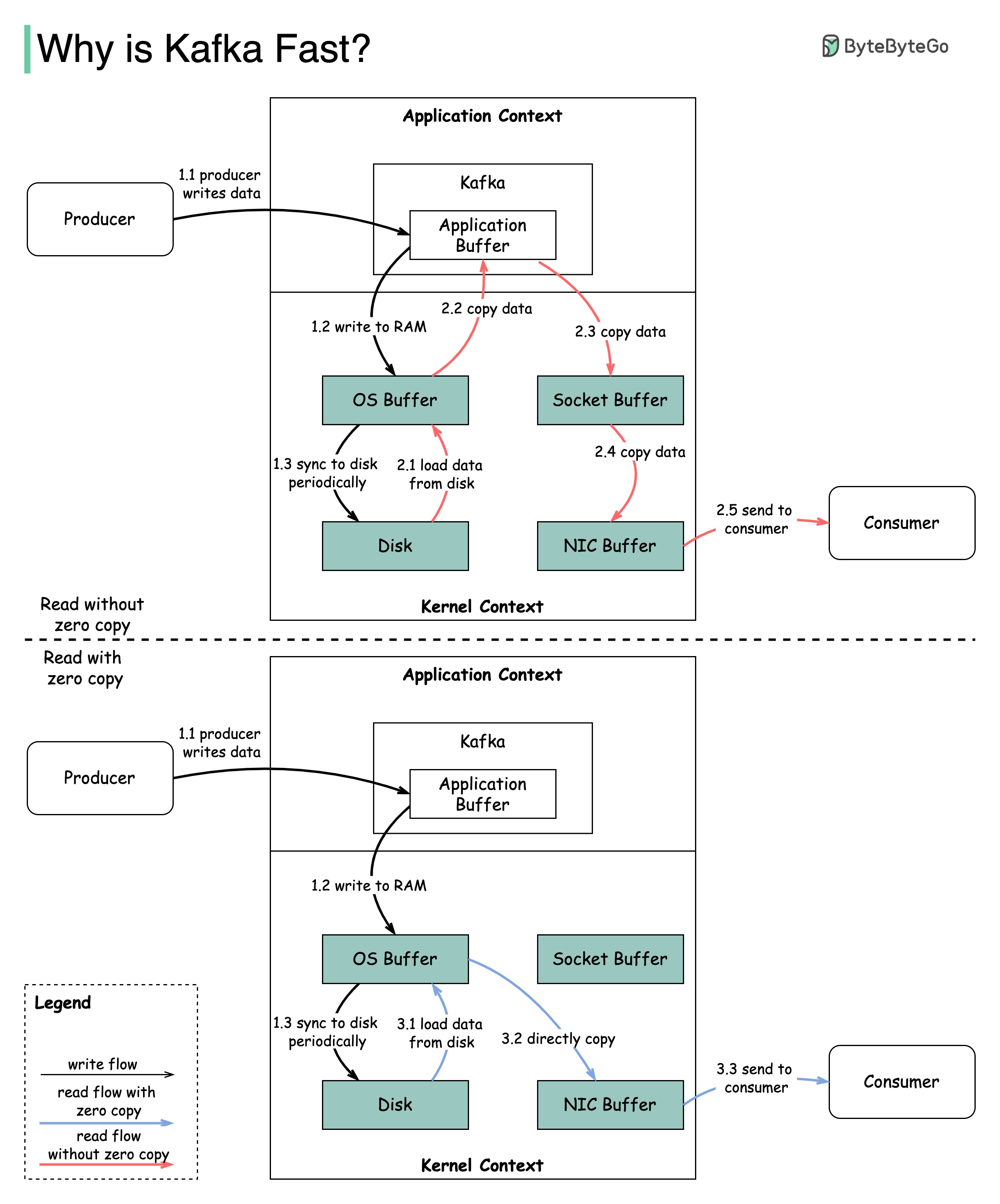Explore the key design choices behind Kafka's high performance.

There are many design decisions that contributed to Kafka’s performance. In this post, we’ll focus on two. We think these two carried the most weight.
The first one is Kafka’s reliance on Sequential I/O.
The second design choice that gives Kafka its performance advantage is its focus on efficiency: zero copy principle.
The diagram above illustrates how the data is transmitted between producer and consumer, and what zero-copy means.
Zero copy is a shortcut to save multiple data copies between the application context and kernel context.